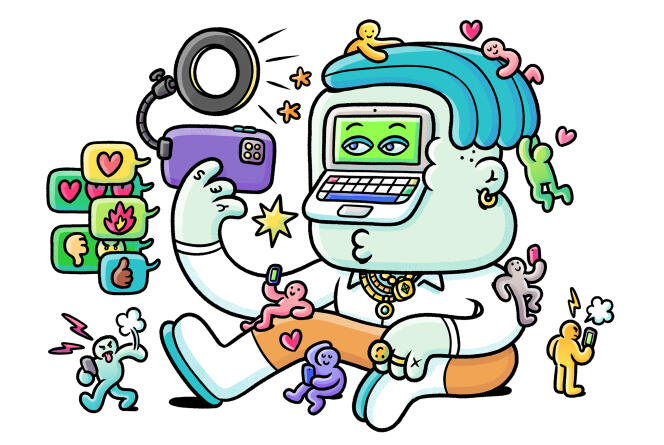


On social media, between the parents who proudly display their children and the rigorists who post absolutely nothing about their offspring, there's a third category: parents of emoji-faced babies. On Instagram, in particular, we follow the growth, vacations, joys and sorrows of these toddlers but we don't know their faces. The reason: Their parents redact the photos by sticking panda-head emojis, yellow smileys, thumbnails or blurring strips on the heads of their heirs.
While the majority of online publications display juvenile, smiling faces in the open, all you have to do is type in #famille, #enfamille or any related hashtag to catch a glimpse of these amusingly masked digital creatures. Even the boss of the Meta multinational (Facebook and Instagram), Mark Zuckerberg, is the father of smiley-faced daughters.
These babymojis, as the online magazine Slate dubbed them back in 2018, have emerged both with the blossoming of vlogging (the creation of video content broadcast online), accounts devoted to parenting and also debates about children's overexposure on social media and respect for their privacy.
Even today, influencers such as Poupette Kenza are regularly pinned for exposing their offspring in their content without limits. And this despite the definitive adoption, on February 6, of a law in France to protect children's image rights on the Internet and the excesses of "sharenting" (a contraction in English of "sharing" and "parenting"). Beyond the influence sector, 53% of parents have already shared photos and videos of their children on social media, according to a February 2023 study by France's Parenthood and Digital Education Observatory. Of these, 91% have done so before the child's fifth birthday.
The practice is not without risks. Even harmless photos of children can be misused for pedophilic purposes, or used for cyberbullying not to mention the implications they may have for a minor's privacy and future reputation. As a result, many media outlets, such as HuffPost, have advocated at least masking children's faces before posting or restricting its publication to a private circle.
But that doesn't solve all the problems, for, far from respecting image rights, blurring has been a way since the 1950s of circumventing people's consent, André Gunthert, senior lecturer in visual history at the School of Advanced Studies in the Social Sciences, has written in his blog. "The practice of blurring (...) is a typical usage of the tabloid press which aims to preserve the publication of an image, when it exposes a legal risk or reveals the identity of an actor in an unwanted way. (...) It is therefore an artifice designed to minimize legal risk – apparently successfully."
You have 40.82% of this article left to read. The rest is for subscribers only.
